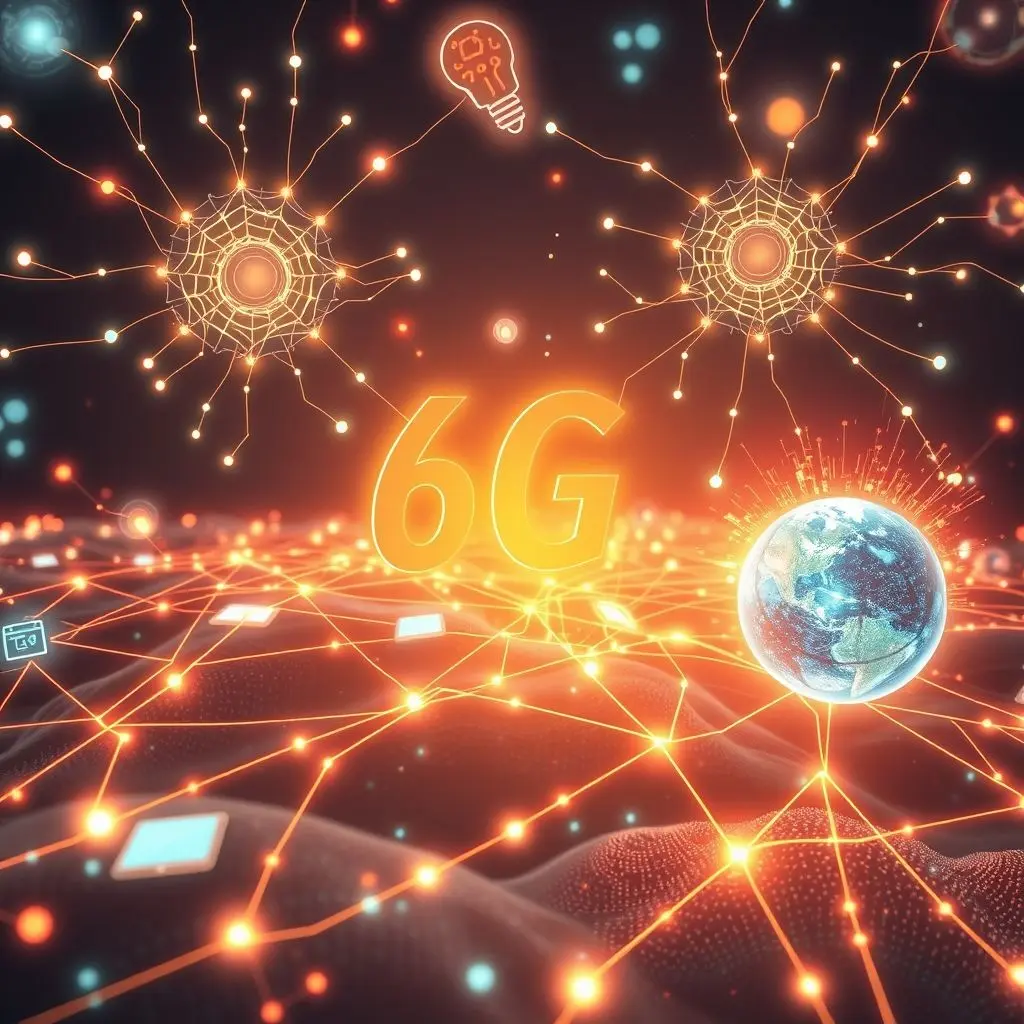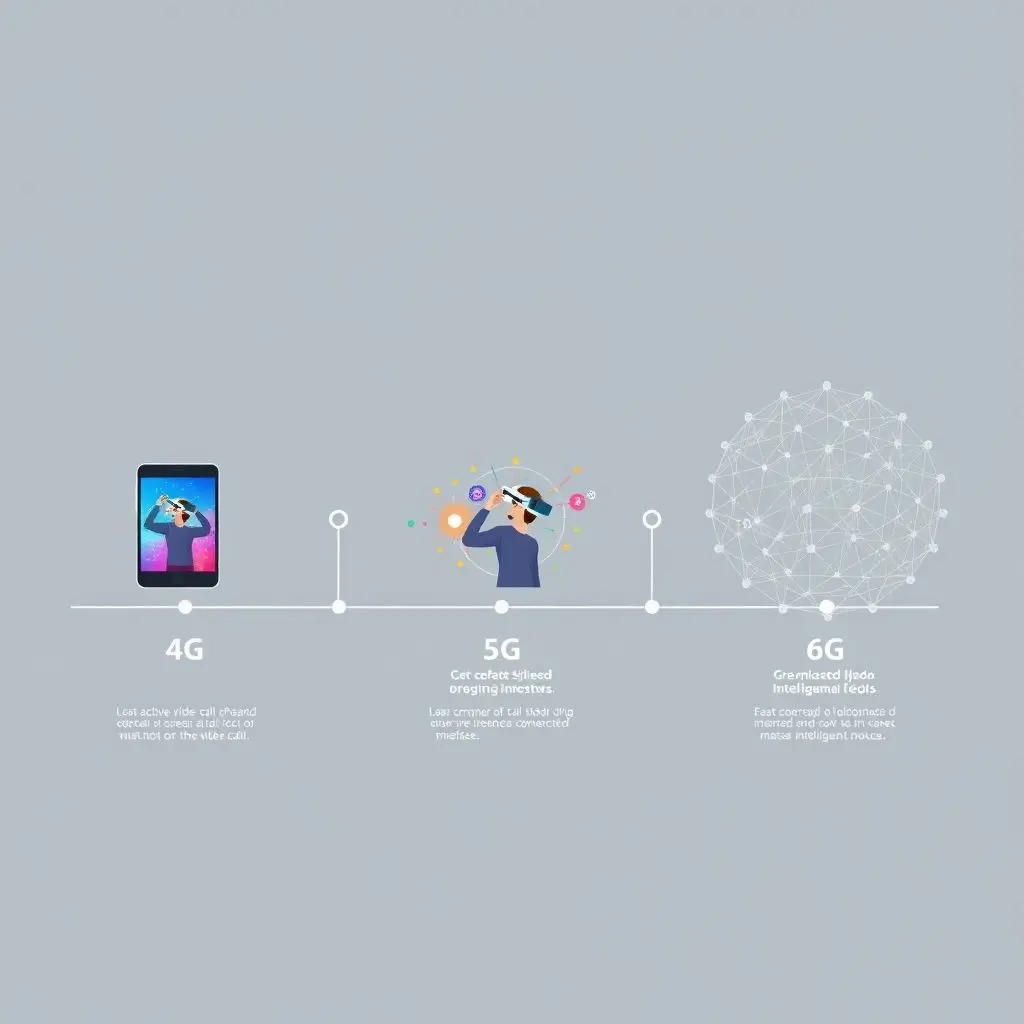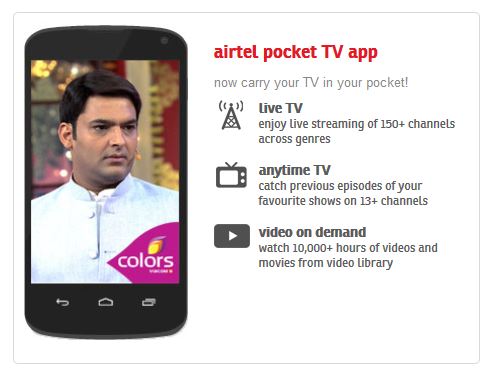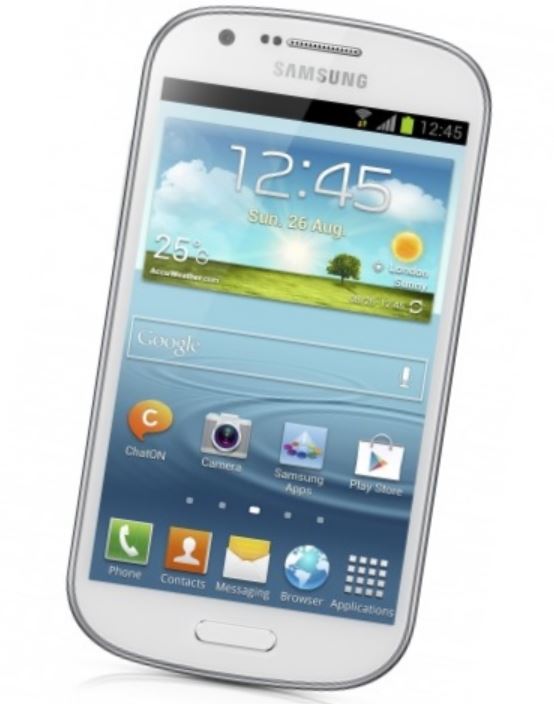Ever felt that pang of frustration with a slow internet connection? We’ve all been there. Remember when 4G felt like a speed demon? It was our digital highway, getting us where we needed to go, albeit sometimes with a bit of rush-hour traffic. Then 5G rolled onto the scene, like an exclusive express lane suddenly opening up, making streaming smoother and downloads zip by. But now, the tech world is buzzing about 6G, and the analogies are shifting from highways to something more like… data teleportation. Imagine information arriving not just fast, but instantaneously, potentially connecting our world—and even our senses—in ways we’re only beginning to dream about. If that thought alone makes your brain tingle with excitement, you’re in the right place. Let’s dive into the generations of mobile connectivity, visualize their speeds, and explore what each leap truly means for us.
Before we get into the nitty-gritty technical details, how about a super-quick visual and audio byte to set the stage? Our recent YouTube Short condenses this generational leap into less than 60 seconds. It’s a fun, fast take that might just ‘wrinkle your brain in a good way,’ as we playfully put it. Give it a watch!
Told ya it was quick! Now, let’s expand on those ideas.
Table of Contents
The ‘G’ in Mobile Networks: A Quick Pit Stop
Before we zoom ahead, let’s clarify what the ‘G’ stands for. Simply put, ‘G’ means ‘Generation.’ Each new generation of mobile network technology represents a significant step up in speed, capacity, and functionality over its predecessor. Think of it as evolving versions of the wireless communication standards that our smartphones and other connected devices use to talk to the internet and each other.
4G LTE: The Reliable Workhorse That Revolutionized Mobile Internet
Fourth-Generation Long-Term Evolution, or 4G LTE, became the standard that truly brought high-speed internet to our pockets. It transformed our daily lives, making mobile video streaming, seamless video calls, and online gaming on the go a reality.
Visualizing 4G: The Bustling Digital Highway
Going back to our highway analogy, 4G is like a well-established, multi-lane highway system. During off-peak hours, traffic flows smoothly, and you can get things done efficiently. However, during peak times – when many users are trying to stream, download, or browse simultaneously – this highway can get congested. You’ll still reach your destination, but there might be slowdowns and a bit of ‘digital road rage’ (buffering, lag).
- Typical Speeds: While peak speeds can theoretically reach up to 100 Mbps (Megabits per second) for moving devices and 1 Gbps (Gigabit per second) for stationary ones, real-world average speeds for 4G LTE typically range from 10-50 Mbps.
- Latency: Generally around 30-50 milliseconds (ms), which was a huge improvement over 3G, enabling more responsive online experiences.
The Impact of 4G
4G wasn’t just about faster downloads; it was a catalyst for innovation:
- HD Video Streaming: Services like Netflix, YouTube, and Prime Video became easily accessible on mobile.
- Social Media Evolution: Supported the rise of image and video-heavy social platforms.
- Mobile Commerce: Made online shopping and banking on the go seamless.
- App Economy Boom: Provided the necessary bandwidth for a plethora of complex mobile applications.
While still incredibly useful and widely available, the increasing demand for data and new types of applications began to highlight 4G’s limitations, paving the way for the next generation.
5G: Hitting the Express Lane for Unprecedented Connectivity
Fifth-Generation wireless technology, or 5G, isn’t just an incremental improvement over 4G; it’s a transformative leap designed to handle a much wider range of applications and an explosion of connected devices.
Visualizing 5G: The Uncongested Express Lane
If 4G is the busy highway, 5G is like having multiple, dedicated express lanes suddenly open up. These lanes are wider, smoother, and far less congested. Data flows with incredible speed and responsiveness. This means significantly faster downloads, virtually lag-free streaming, and the ability to connect many more devices simultaneously without performance degradation.

- Blazing Speeds: 5G aims for peak download speeds of up to 10-20 Gbps, with real-world average speeds often ranging from 100 Mbps to several hundred Mbps, and in some cases, even exceeding 1 Gbps.
- Ultra-Low Latency: A game-changer, with latency potentially dropping to as low as 1 millisecond (ms). This near-instantaneous response time is crucial for applications like real-time gaming, augmented reality (AR), virtual reality (VR), and remote operations.
The Three Pillars of 5G Impact
5G’s capabilities are often categorized into three main use case types:
- Enhanced Mobile Broadband (eMBB): This is the ‘faster internet’ aspect most consumers notice first. Think lightning-fast downloads of large files, buffer-free 4K/8K video streaming, and immersive AR/VR experiences.
- Ultra-Reliable Low-Latency Communication (URLLC): This enables mission-critical applications where even a tiny delay can have significant consequences. Examples include remote surgery, autonomous vehicles, and smart factory automation.
- Massive Machine-Type Communication (mMTC): 5G can support a vastly larger number of connected devices per square kilometer (up to a million!). This is vital for the Internet of Things (IoT), smart cities, smart agriculture, and large-scale sensor networks.
The Rollout Reality
While the promise of 5G is immense, its rollout is an ongoing process. True 5G (often utilizing higher frequency bands like mmWave for top speeds) requires denser network infrastructure. Many initial 5G deployments leverage existing 4G infrastructure (Non-Standalone 5G), with Standalone 5G networks offering the full suite of benefits gradually becoming more common. Device compatibility is also a factor, requiring newer smartphones and devices equipped with 5G modems.
6G: Beyond the Horizon – Teleporting Data and Connecting Senses?
Just as 5G is finding its footing, researchers and visionaries are already conceptualizing Sixth-Generation wireless technology, or 6G. While still largely in the realm of theoretical research and development, the ambitions for 6G are nothing short of revolutionary, promising to redefine connectivity as we know it.
Disclaimer: It’s crucial to remember that 6G is currently in the very early stages of research and development (R&D). The speeds, technologies, and applications discussed below are based on current projections and visions. The final form and capabilities of 6G may differ significantly as R&D progresses over the next decade or so.
Visualizing 6G: Instantaneous Data Teleportation
If 5G is the express lane, then 6G aims to be something akin to data teleportation. Imagine information, experiences, and commands transmitted almost instantaneously, as if distance and bandwidth limitations have vanished. We’re talking about speeds so immense and latency so negligible that it could enable scenarios straight out of science fiction.

- Hypothetical Speeds: Projections for 6G often talk about peak speeds reaching into Terabits per second (Tbps) – that’s 1,000 times faster than 1 Gbps! Average speeds would also be orders of magnitude higher than 5G.
- Microsecond Latency: The goal is to achieve latency in the microsecond range (µs), which is 1,000 times faster than 1 millisecond. This level of responsiveness could unlock entirely new paradigms of interaction.
Potential Technologies Powering the 6G Vision
Achieving these ambitious goals will require breakthroughs in several areas. Some potential enabling technologies being explored include:
- Terahertz (THz) Frequencies: Utilizing even higher frequency bands than 5G’s mmWave to unlock massive bandwidth.
- Artificial Intelligence (AI) and Machine Learning (ML): AI/ML will likely be integral to managing 6G networks, optimizing resources, enhancing security, and enabling new services.
- Reconfigurable Intelligent Surfaces (RIS): Smart surfaces that can dynamically reflect and steer radio waves to improve coverage and signal strength.
- Space-Air-Ground Integrated Networks: Seamlessly integrating terrestrial networks with satellites and aerial platforms (like drones) for truly global and ubiquitous coverage.
- Quantum Communications: Potentially leveraging quantum mechanics for ultra-secure communication.
Visionary Use Cases: The “Wrinkled Brain” Scenarios
The potential applications of 6G are where things get truly mind-bending, aiming to merge the physical, digital, and even biological worlds:
- Holographic Communication: Lifelike, real-time 3D holographic interactions, making video calls feel like in-person meetings.
- Truly Immersive Extended Reality (XR): AR, VR, and Mixed Reality (MR) experiences so seamless and realistic they are indistinguishable from reality.
- Brain-Computer Interfaces (BCIs): Direct communication pathways between the human brain and digital devices or even other brains, though this raises profound ethical questions.
- Tactile Internet / Haptic Feedback: Transmitting touch and physical sensations over the network, enabling remote control of robots with sensory feedback or richer virtual experiences.
- Hyper-Accurate Digital Twins: Creating dynamic, real-time virtual replicas of physical objects, systems, or even entire cities for sophisticated simulation and control.
- Connecting Senses: The idea that 6G could enable the transmission of not just sight and sound, but potentially smell, taste, and touch, creating truly multi-sensory digital experiences.
The journey towards 6G is long, with commercial deployment unlikely before 2030 at the earliest. However, the research happening today is laying the groundwork for a future where connectivity transcends our current understanding.
4G vs. 5G vs. 6G: A Snapshot Comparison
Let’s break down the key differences in a more direct comparison:
| Feature | 4G LTE | 5G | 6G (Projected/Visionary) |
|---|---|---|---|
| Peak Download Speed | ~1 Gbps (stationary) | 10-20 Gbps | 1+ Tbps |
| Average Real-World Speed | 10-50 Mbps | 100 Mbps – 1+ Gbps | Many Gbps to Tbps |
| Latency | ~30-50 ms | As low as 1 ms (URLLC) | Sub-millisecond (microseconds) |
| Key Technologies | OFDMA, MIMO | mmWave, Massive MIMO, Network Slicing, Beamforming | THz Frequencies, AI/ML Integration, RIS, Integrated Space-Air-Ground Networks |
| Primary Focus | Mobile Broadband | eMBB, URLLC, mMTC (IoT, AR/VR, Smart Cities) | Holographic Comms, XR, BCI, Tactile Internet, Pervasive AI |
| Analogy | Busy Highway | Express Lane | Data Teleportation |
Note: Values for 6G are speculative and based on early research goals.

Beyond Just Speed: Other Key Evolutions
While speed is the most talked-about metric, each generation also brings improvements in other crucial areas:
- Connectivity Density: 5G can support far more devices per square kilometer than 4G (around 1 million vs. 100,000). 6G is expected to push this even further, enabling a truly hyper-connected world where virtually everything can be intelligent and connected.
- Energy Efficiency: Each new generation strives for better energy efficiency per bit of data transmitted. This is crucial for reducing the environmental footprint of mobile networks and extending battery life for connected devices, especially for massive IoT deployments.
- Network Intelligence: With 5G, and even more so with 6G, networks are becoming more intelligent, using AI and ML to self-optimize, predict issues, manage resources dynamically, and enhance security.
- Security and Privacy: As connectivity becomes more pervasive and critical, security and privacy considerations become paramount. Each generation aims to build more robust security mechanisms, though the increasing complexity and attack surfaces also present new challenges.
The Road Ahead: Challenges and Opportunities
The journey from 4G to 5G, and eventually to 6G, is paved with both immense opportunities and significant challenges:
- Infrastructure Investment: Deploying new network generations, especially those requiring denser cell sites (like mmWave 5G and potentially THz 6G), requires substantial financial investment.
- Spectrum Allocation: Access to sufficient radio frequency spectrum is critical. International coordination and national policies play a huge role in making spectrum available for new technologies.
- Technological Hurdles: For 6G, working with THz frequencies presents significant engineering challenges related to signal propagation, component design, and energy consumption.
- Standardization: Global standards are essential for interoperability and economies of scale. Organizations like the ITU and 3GPP play a vital role in this process.
- Ethical and Societal Implications: As we move towards hyper-connectivity and technologies like BCIs (envisioned with 6G), profound ethical, societal, and privacy questions need to be addressed proactively. Ensuring equitable access and preventing misuse will be key.
Frequently Asked Questions (FAQs)
Q1: When will 6G be available?
A: 6G is still in the early research and development phase. Commercial deployment is generally not expected until around 2030 or later, following extensive research, development, standardization, and testing.
Q2: Do I need a new phone for each new generation (e.g., to use 5G)?
A: Yes, generally. To take advantage of a new network generation like 5G, you need a device (e.g., smartphone, modem) that is equipped with the specific chipset and antennas designed for that generation. Your 4G phone cannot connect to a 5G network in 5G mode, though 5G phones are typically backward compatible with 4G.
Q3: Is 5G truly better than 4G everywhere right now?
A: Not necessarily everywhere, yet. While 5G offers superior speed and lower latency, its coverage is still expanding. In areas with strong 5G coverage (especially mid-band or high-band/mmWave), the difference can be substantial. In areas with limited or no 5G, your device will default to 4G LTE, which remains a robust and reliable network.
Q4: What are the main benefits of moving from 4G to 5G for an average user?
A: For average users, the most noticeable benefits of 5G include significantly faster download and upload speeds (quicker app downloads, faster loading of large files/webpages), smoother video streaming with higher resolutions (less buffering), and improved performance in crowded areas due to higher capacity.
Q5: How will 6G impact industries beyond personal communication?
A: 6G is envisioned to have a profound impact across numerous industries. Potential applications include advanced autonomous systems (vehicles, drones), sophisticated remote healthcare (telesurgery with haptic feedback), truly intelligent manufacturing (smart factories with AI-driven processes), hyper-realistic virtual and augmented reality for training and collaboration, and large-scale environmental monitoring with unprecedented detail.
The Ever-Accelerating Future of Connectivity
From the reliable highways of 4G to the express lanes of 5G, and onto the mind-bending ‘data teleportation’ possibilities of 6G, the evolution of mobile network technology is a relentless journey towards a more connected, intelligent, and instantaneous world. Each generation builds upon the last, unlocking new capabilities that reshape how we live, work, and interact with the digital realm.
While 6G is still a distant star on the horizon, the advancements it promises could fundamentally alter our reality. For now, 5G continues its rollout, bringing tangible benefits and laying the groundwork for future innovations. One thing is certain: the quest for faster, more responsive, and more encompassing connectivity is far from over. The future is fast, and it’s wireless.




